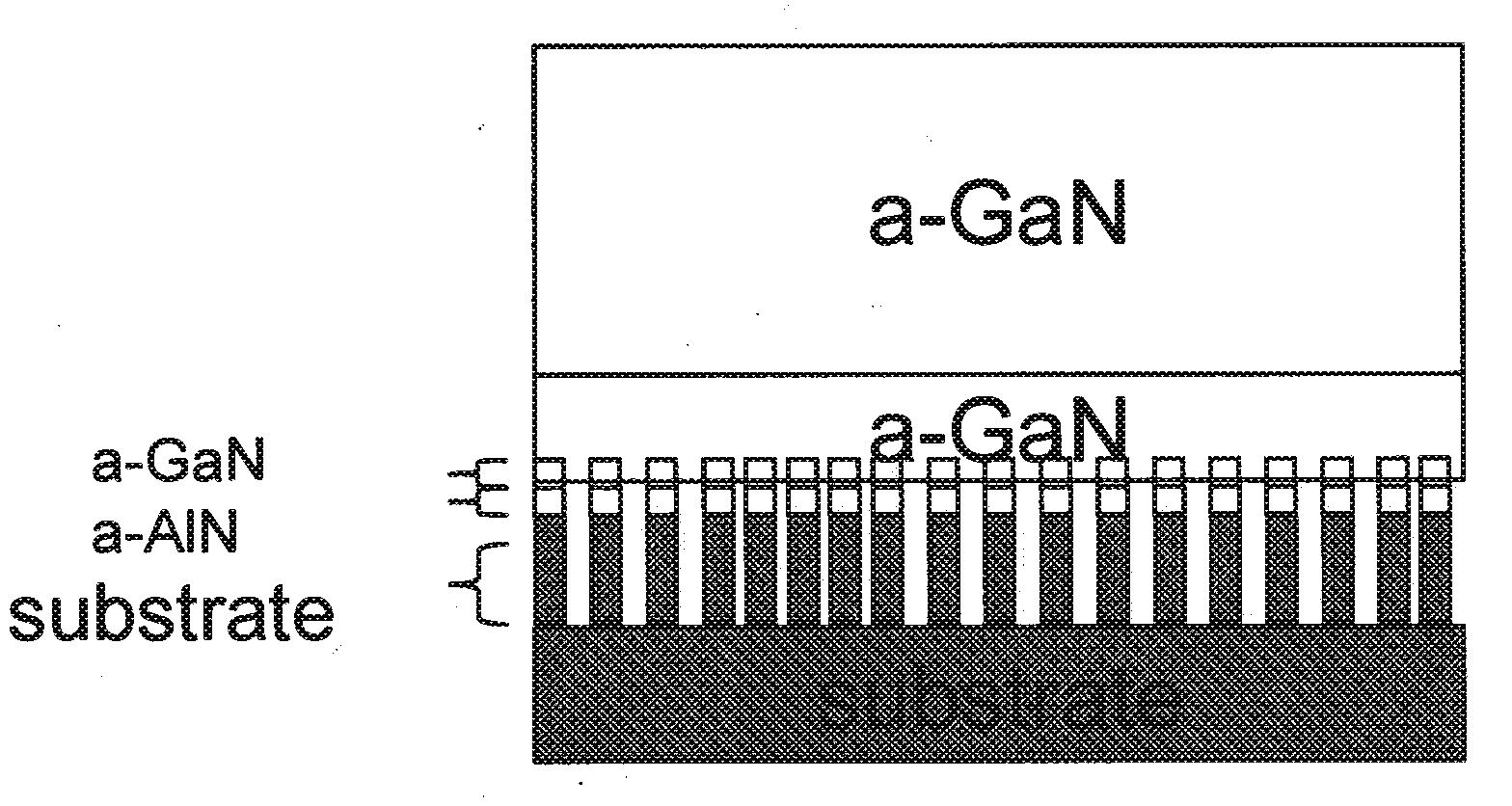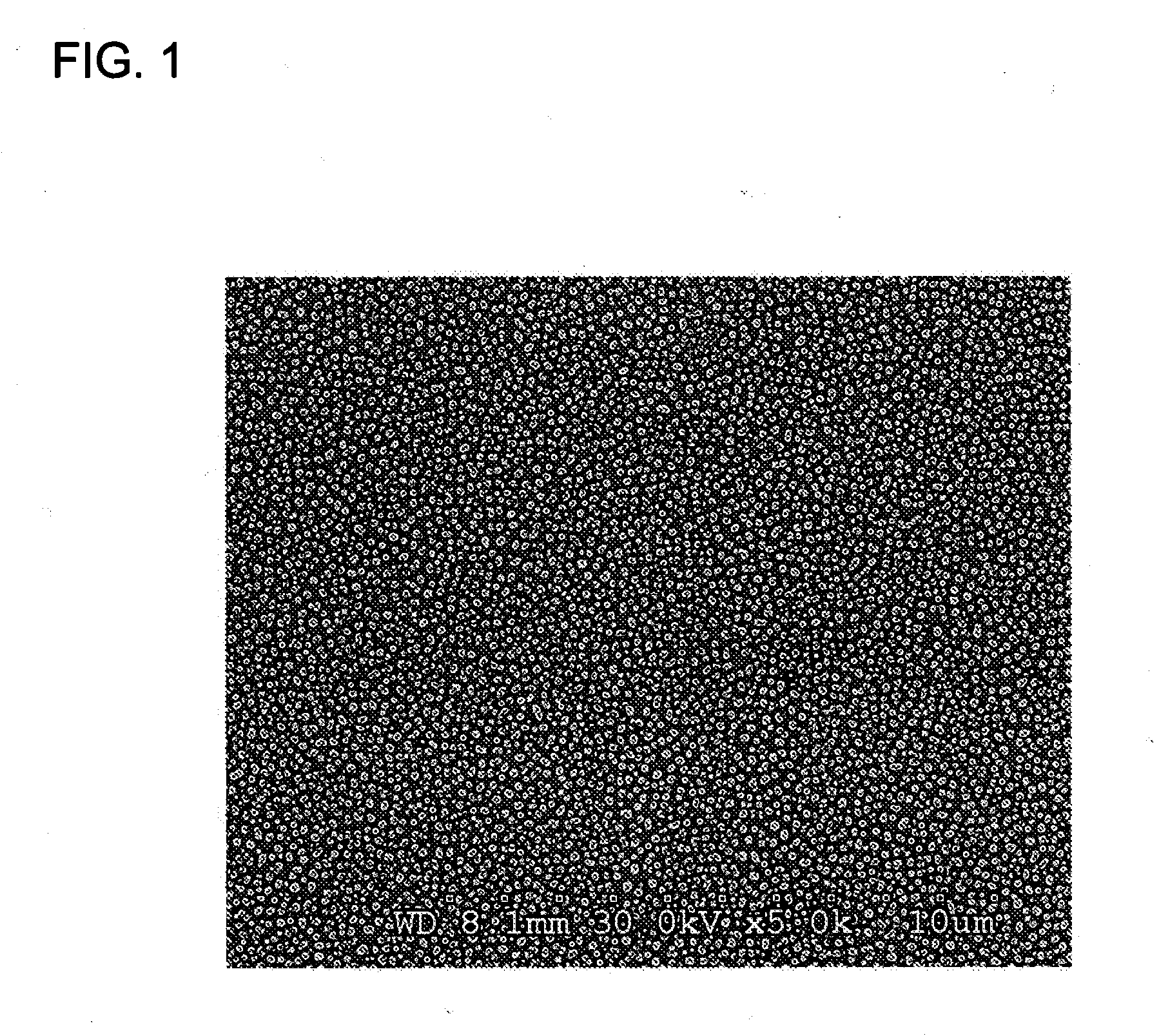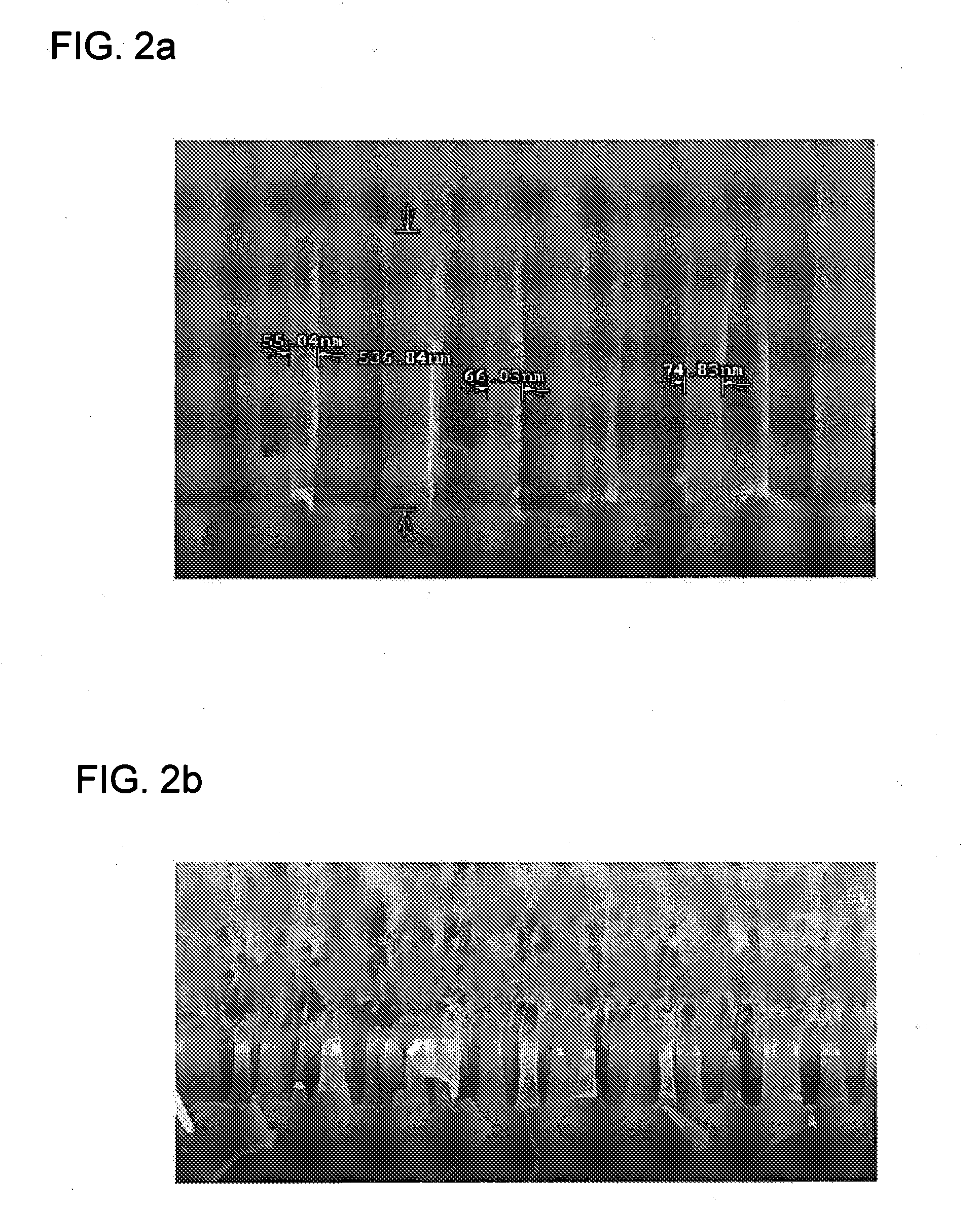Non-polar iii-v nitride semiconductor and growth method
- Summary
- Abstract
- Description
- Claims
- Application Information
AI Technical Summary
Benefits of technology
Problems solved by technology
Method used
Image
Examples
example 1
[0084]A γ-plane-oriented sapphire substrate of about 2 inches (5.08 cm) in diameter with MOCVD-deposited a-plane AlN (20 nm) and GaN of about 0.6 μm is loaded onto the substrate holder of a HVPE vertical reactor. Before loading, the a-plane GaN template is degreased in KOH for a few seconds, rinsed in de-ionized water, etched in a H2SO4 / H3PO4=3:1 solution at 80° C. for a few minutes, then rinsed in de-ionized water. It is then necessary to create a mask onto the template. Firstly, a thin dielectric layer of SiO2 or Si3N4 of ˜200 nm is deposited by PECVD onto the GaN template. Then, a thin Ni metal layer of 2-30 nm is deposited by e-beam evaporation or sputtering onto the dielectric layer. Rapid annealing of the metal under N2 gas at an ambient temperature of ˜830° C. for about one minute is carried out to form a high density of Ni nano-dots, as shown in FIG. 1, forming the nano-mask. The thickness of the Ni metal allows the control of the density and the dimension of the Ni nano-dot...
example 2
[0092]This Example is similar to Example 1, except that here the a-plane GaN nanocolumns are made using anodic porous alumina nano-mask fabrication processes. A γ-plane-oriented sapphire substrate of about 2 inches (5.08 cm) in diameter with MOCVD deposited a-plane AlN (20 nm) and GaN of 0.6 μm is loaded onto the substrate holder of the HVPE vertical reactor. Before loading, the a-plane GaN template is degreased in KOH for a few seconds, rinsed in de-ionized water, etched in a H2SO4 / H3PO4=3:1 solution at about 80° C. for a few minutes, then rinsed in de-ionized water. A thin dielectric layer of SiO2 or Si3N4 of ˜200 nm is deposited by PECVD onto the a-plane GaN template. Then a thin Al metal of about 60-200 nm is deposited by e-beam evaporation or sputtering onto the dielectric layer. A two step anodization process is used. A first anodization is conducted under 0.3 M oxalic acid solution at 5° C. with current ˜100 mA and 20 V for about 6 hours to form a layer of oxide (alumina) on ...
example 3
[0095]Here, the initial MOCVD epitaxial lateral overgrowth process described in Example 1 is replaced by a combined pulsed and normal MOCVD growth method. In this method, the flow sequence of reagent gases is on (NH3 and TMG on) and off (TMG on and NH3 off) in turn for the enhanced lateral growth mode. The time for the on and off period is set to be around 20-60 seconds and 10-15 seconds respectively. The a-plane n-GaN growth step is continued until a continuous a-plane n-GaN epitaxial layer is produced. Then a full non-polar LED device structure is grown on top of the a-plane GaN. Then an Ni (10 nm) / Au (10 nm) contact is deposited and annealed in O2 at 550° C. for about 1 minute. Ti / Al / Ti / Au with Al as the reflector is deposited on top of the Ni / Au contact. The non-polar device is then solder bonded to a submount for good thermal management. The submount may comprise SiC, CVD diamond, AlN, metals, alloys or silicon. The submount is removed from the substrate / template as previously ...
PUM
 Login to View More
Login to View More Abstract
Description
Claims
Application Information
 Login to View More
Login to View More - R&D
- Intellectual Property
- Life Sciences
- Materials
- Tech Scout
- Unparalleled Data Quality
- Higher Quality Content
- 60% Fewer Hallucinations
Browse by: Latest US Patents, China's latest patents, Technical Efficacy Thesaurus, Application Domain, Technology Topic, Popular Technical Reports.
© 2025 PatSnap. All rights reserved.Legal|Privacy policy|Modern Slavery Act Transparency Statement|Sitemap|About US| Contact US: help@patsnap.com



